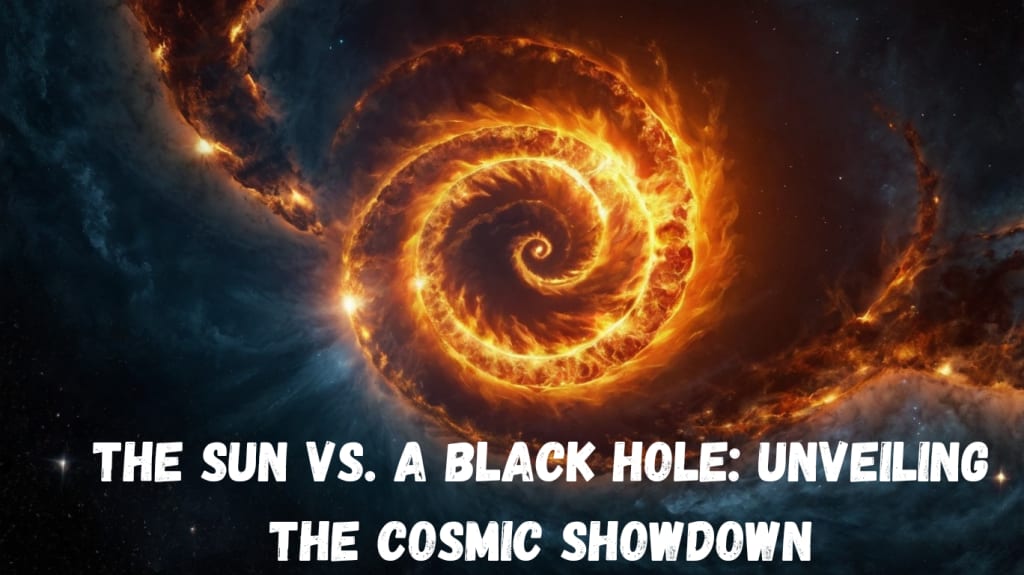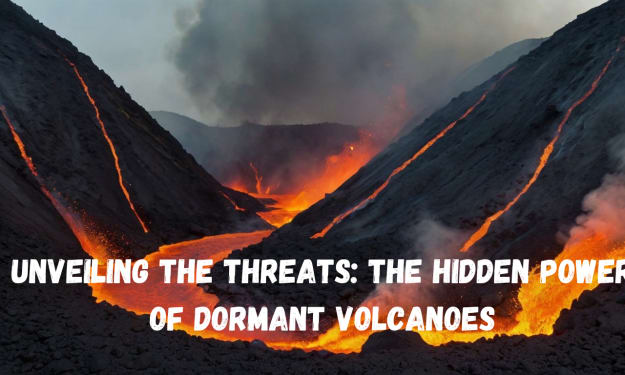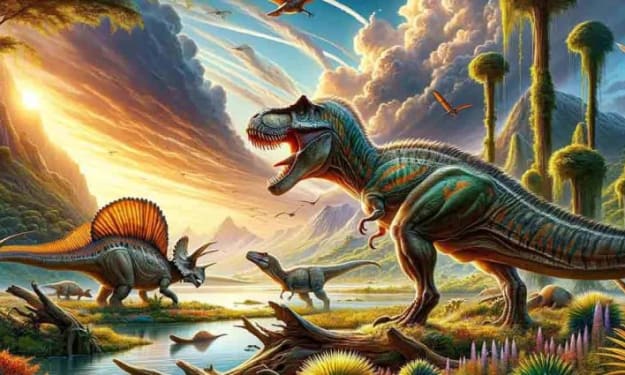The Sun vs. a Black Hole: Cosmic Clash of Titans**
The Sun vs. a Black Hole: Unveiling the Cosmic Showdown

*Introduction*
Imagine a colossal giant like the Sun clashing with a seemingly tiny yet immensely powerful opponent: a small black hole. This cosmic collision could have drastic consequences for our solar system. Will the Sun withstand the intense gravitational pull of the black hole, or will it be swallowed whole? Let's explore the fascinating dynamics and potential outcomes of such a mind-blowing cosmic event by breaking down the forces at play.
**Understanding Black Holes**
A black hole is a region of space with such strong gravity that nothing, not even light, can escape from it. Acting like a cosmic vacuum cleaner, it sucks up anything that gets too close, warping the fabric of space-time around it. Black holes are among the most mysterious and powerful objects in the universe, challenging our understanding of physics.
Black holes come in various sizes, from small ones a few miles wide to supermassive ones billions of times the mass of the Sun. Most black holes form from the collapse of massive stars. After their formation, black holes can grow by consuming everything in their path, and when two or more black holes collide, they can merge into one enormous cosmic entity.
**Types of Black Holes**
The smallest known black holes are called stellar black holes, weighing between 3 to 10 times the mass of our Sun. Despite being relatively small, they are incredibly dense, compressing vast amounts of matter into a tiny space. For comparison, intermediate-mass black holes weigh between 100 to 1,000 solar masses, while supermassive black holes can weigh millions or billions of solar masses and span unimaginably vast distances.
**Formation of Stellar Black Holes**
Stellar black holes are born from the remnants of massive stars. When a star exhausts its nuclear fuel, gravity takes over, causing the star to collapse. As it collapses, the core heats up to billions of degrees, eventually leading to a supernova explosion. The remaining core becomes a singularity, a point of infinite density and gravity, surrounded by an event horizon beyond which nothing can escape.
**The Sun vs. a Black Hole: Potential Scenarios**
Given the distances involved, the likelihood of our Sun colliding with a black hole is incredibly small. However, it's fascinating to explore the potential outcomes. The closest known black hole to our solar system, Gaia BH1, is about 1,600 light-years away, making such an encounter extremely unlikely. Yet, understanding how such a scenario could unfold helps us appreciate the forces at play in our universe.
**Rogue Black Holes**
One hypothetical scenario involves a rogue black hole passing through our solar system, much like a comet or asteroid. Unlike these visible objects, black holes are invisible and detectable only by their gravitational effects. If a rogue black hole approached the Sun, its immense gravity would start pulling material from the Sun's surface, leading to a process called spaghettification, where the Sun would get stretched and distorted.
**The Accretion Disc**
As the black hole pulled in material from the Sun, it would form a swirling disc around itself called an accretion disc. This disc would heat up, emitting intense radiation. The Sun, now significantly brighter and hotter, would release massive amounts of energy in the form of light and heat. The outer layers of the Sun would vaporize, creating a massive cloud of gas and dust that would expand outward.
**Impact on Earth and the Solar System**
Such an event would have catastrophic consequences for Earth. The intense radiation and solar material would cause wildfires and vaporize oceans. High-energy particles would bombard the planet, ionizing the atmosphere and making survival impossible. The entire solar system would be affected, with planets destroyed by the immense heat and radiation.
**Tidal Disruption Event**
In the unlikely scenario of a direct collision, the black hole's gravity would cause the Sun's outer layers to be pulled away, creating a tidal disruption event. This event would result in a massive explosion, and the black hole would grow in size, forming a new accretion disc around it. The Sun, being larger than a typical star, wouldn't be completely devoured but would be significantly disrupted.
**Historical Perspective on Supervolcanoes**
Volcanic activity, both in Antarctica and elsewhere, holds the potential to reshape our planet. Understanding past eruptions helps scientists predict future behavior. For example, the Central Atlantic Magmatic Province (CAMP) event over 200 million years ago involved a series of massive volcanic eruptions lasting 600,000 years. This activity released immense amounts of carbon dioxide, altering the planet's climate and contributing to the growth of dinosaurs.
**The Yellowstone Supervolcano**
The supervolcano beneath Yellowstone National Park is another significant point of concern. With a history of epic eruptions, Yellowstone's last major eruption occurred about 640,000 years ago. This eruption was a thousand times greater than the 1980 eruption of Mount St. Helens and reshaped much of North America. Despite its dormancy, recent underground activity at Yellowstone keeps scientists vigilant.
**Monitoring Volcanic Activity**
Advances in technology have significantly improved our ability to monitor volcanic activity. Satellites can detect thermal anomalies and gas emissions, while drones collect samples from inaccessible areas. These tools are crucial for understanding volcanic behavior and improving early warning systems.
**Preparing for the Unpredictable**
While predicting volcanic eruptions with absolute certainty is challenging, preparation and education are key to mitigating their impact. Communities near active volcanoes should be informed about evacuation routes, emergency shelters, and safety protocols. Governments must invest in research and monitoring to stay ahead of potential threats.
**Conclusion**
From the icy reaches of Antarctica to the fiery depths of black holes, the forces of nature hold immense power to shape our universe. By studying these phenomena and leveraging modern technology, scientists aim to unlock the secrets of these hidden giants. Understanding the dynamics of black holes and their potential impact helps us appreciate the delicate balance of our cosmic environment.
As we continue to explore and understand the universe, we move closer to a future where we can coexist with these powerful forces. By staying informed and prepared, we can face the challenges posed by volcanic activity and cosmic events with greater confidence and resilience. Let’s keep researching, exploring, and observing the depths of space, ready for whatever the universe might throw our way.
About the Creator
Enjoyed the story? Support the Creator.
Subscribe for free to receive all their stories in your feed. You could also pledge your support or give them a one-off tip, letting them know you appreciate their work.





Comments
There are no comments for this story
Be the first to respond and start the conversation.